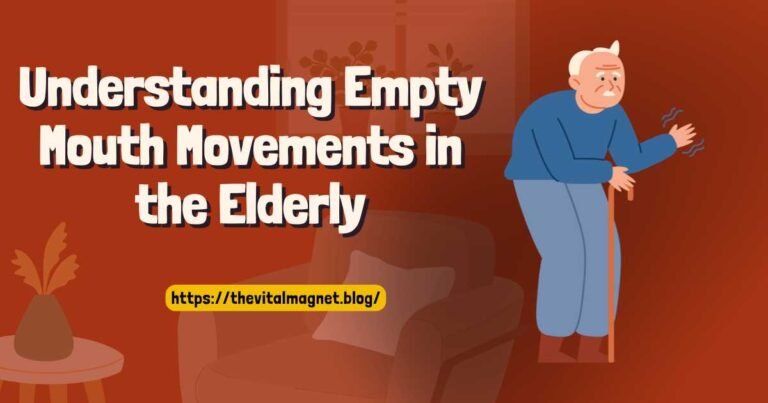Fatty Liver Disease: Causes, Symptoms & Treatment Guide

Fatty liver disease is growing more widespread as a health issue around the world. Despite its seriousness, many people don’t realize they have it until it has progressed significantly. If you’ve ever wondered what fatty liver disease is, why it happens, and how to protect yourself, this guide is for you. Here, in simple language, we will explain everything from the basics to advanced insights.
What Exactly Is Fatty Liver Disease?
Your liver is a vital organ that performs many essential functions, including filtering toxins, producing bile, and storing energy. Usually, your liver contains a small amount of fat — about 5-10% of its weight. However, when fat makes up more than 10% of your liver’s weight, it’s called fatty liver disease or hepatic steatosis.
Too much fat in the liver can cause inflammation (swelling), eventually damaging the liver cells and affecting its functioning.
Different Types of Fatty Liver Disease: What You Need to Know
Fatty liver disease mainly has two types.
| Type | Cause | Common in | Risk Factors | Can it progress to liver damage? |
|---|---|---|---|---|
| Alcoholic Fatty Liver Disease (AFLD) | Excessive alcohol consumption | People who drink heavily | Heavy drinking, poor nutrition | Yes, can lead to cirrhosis |
| Non-Alcoholic Fatty Liver Disease (NAFLD) | Fat accumulation not related to alcohol | People with obesity, diabetes, metabolic syndrome | Obesity, type 2 diabetes, high cholesterol | Yes, can lead to cirrhosis and cancer |
Key Takeaway
NAFLD is the more common form globally, especially in people who do not consume much or any alcohol but have other metabolic problems.
Why Does Fat Accumulate in the Liver?
Fatty liver develops when the balance between fat production and fat removal in the liver is disturbed. Here are the most common reasons:
- Obesity or excess body weight, especially fat stored around the belly
- Insulin resistance or type 2 diabetes, causing sugar and fat metabolism issues
- High cholesterol and triglycerides, which increase fat in the bloodstream
- Excessive alcohol intake in AFLD
- Certain medications and toxins can also contribute.
- Rapid weight loss or malnutrition in some cases
What Are the Symptoms? How Will You Know If You Have Fatty Liver?
The tricky part about fatty liver disease is that early stages often have no symptoms at all. Many people find out accidentally during routine blood tests or scans.
However, as the condition worsens, you may notice:
- Fatigue or feeling unusually tired
- You might feel mild pain or discomfort in the upper right part of your belly.
- Yellowing of the skin or eyes (jaundice) in advanced stages
- Unexplained weight loss
- Swelling in the abdomen or legs in severe cases
- Confusion or difficulty concentrating if liver function declines significantly.
When to See a Doctor
If you have risk factors like obesity, diabetes, or heavy drinking and notice any of the above symptoms, it’s essential to get a medical check-up.
Diagnosing Fatty Liver Disease: What to Expect
Doctors use several methods to diagnose fatty liver disease:
1. Blood Tests
- Liver function tests (LFTs): Measures enzymes like ALT (alanine aminotransferase) and AST, which increase with liver inflammation.
- Other tests check for viral hepatitis or autoimmune liver diseases.
2. Imaging Tests
- Ultrasound: The most common first step in visualizing fat accumulation in the liver.
- CT scan or MRI: For more detailed images.
- FibroScan: A specialized ultrasound measuring liver stiffness to detect fibrosis or scarring.
3. Liver Biopsy (Rarely)
- A small sample of liver tissue is taken to determine the exact extent of damage.
How Is Fatty Liver Disease Treated?
Currently, no specific medication cures fatty liver, but treatment focuses on stopping progression and reversing fat accumulation.
Lifestyle Changes Are Crucial:
- Lose excess weight gradually (aim for 7-10% body weight reduction)
- Adopt a healthy diet:
- Focus on whole grains, vegetables, fruits, and lean proteins.
- Limit sugary foods, refined carbs, and saturated fats.
- Exercise regularly: At least 150 minutes of moderate aerobic exercise weekly
- Control diabetes and cholesterol: Medication may be prescribed if needed
- Avoid alcohol altogether or limit it strictly.
- Manage blood pressure
Medications: Are Cholesterol Drugs Safe for Fatty Liver?
Many worry that cholesterol-lowering drugs like statins may harm the liver, but research shows they are generally safe and even beneficial for people with fatty liver. Controlling cholesterol can reduce liver fat and lower heart disease risk.
Always talk to your doctor before you start or stop any medicine.
Complications to Watch Out For
If untreated, fatty liver disease can progress to:
- Non-alcoholic steatohepatitis (NASH): Liver inflammation with damage
- Fibrosis: Scarring of liver tissue
- Cirrhosis: Severe scarring causing liver failure
- Liver cancer: Increased risk of cirrhosis develops
Early diagnosis and management help prevent these complications.
Fatty Liver in South Asians: Special Considerations
South Asian populations show higher rates of fatty liver disease even at lower body weights compared to other ethnicities. This is linked to:
- Higher tendency for abdominal fat accumulation
- Greater prevalence of insulin resistance
- Genetic and lifestyle factors
Thus, even if you are not overweight by standard measures, if you have diabetes or high cholesterol, screening for fatty liver is advisable.
Simple Home and Lifestyle Tips to Prevent Fatty Liver
- Keep a healthy weight and avoid losing or gaining weight too fast.
- Follow a balanced diet rich in fibre and low in processed foods
- Exercise consistently — mix cardio and strength training
- Avoid or limit alcohol intake
- Monitor blood sugar and cholesterol regularly
- Avoid unnecessary medications or toxins that can affect liver health
- Make sure to get regular health check-ups, especially if you have risk factors.
Frequently Asked Questions (FAQs)
Q1: Can fatty liver disease be reversed?
A: Yes! Early-stage fatty liver can often be reversed with lifestyle changes like diet and exercise.
Q2: Does alcohol only cause fatty liver?
A: No. Non-alcoholic fatty liver disease (NAFLD) is much more common and linked to metabolic problems, not alcohol.
Q3: Are there any medicines that cure fatty liver?
A: Currently, no specific drugs cure fatty liver. Treatment focuses on managing risk factors and lifestyle.
Q4: Can fatty liver cause pain?
A: Usually, fatty liver does not cause pain. However, advanced stages may cause discomfort in the upper abdomen.
Q5: Does fatty liver increase the risk of liver cancer?
A: Yes, especially if it progresses to cirrhosis. Early treatment reduces this risk.
Summary Table: Fatty Liver Disease At a Glance
| Aspect | Alcoholic Fatty Liver Disease (AFLD) | Non-Alcoholic Fatty Liver Disease (NAFLD) |
|---|---|---|
| Main Cause | Excessive alcohol consumption | Obesity, diabetes, metabolic syndrome |
| Risk Factors | Heavy drinking, poor diet | Obesity, insulin resistance, high cholesterol |
| Symptoms | Fatigue, jaundice, abdominal pain (later stages) | Usually none early, fatigue, discomfort later |
| Diagnosis | Blood tests, ultrasound, liver biopsy if needed | Same as AFLD |
| Treatment | Alcohol abstinence, lifestyle changes | Lifestyle changes, control diabetes, meds if needed |
| Progression Risk | Cirrhosis, liver failure, cancer | Same as AFLD |
Final Thoughts: Take Control of Your Liver Health Today
Your liver works tirelessly to keep you healthy — give it the care it deserves. Don’t delay visiting a healthcare professional if you recognize any risk factors or symptoms mentioned here. Simple lifestyle changes can make a huge difference.






